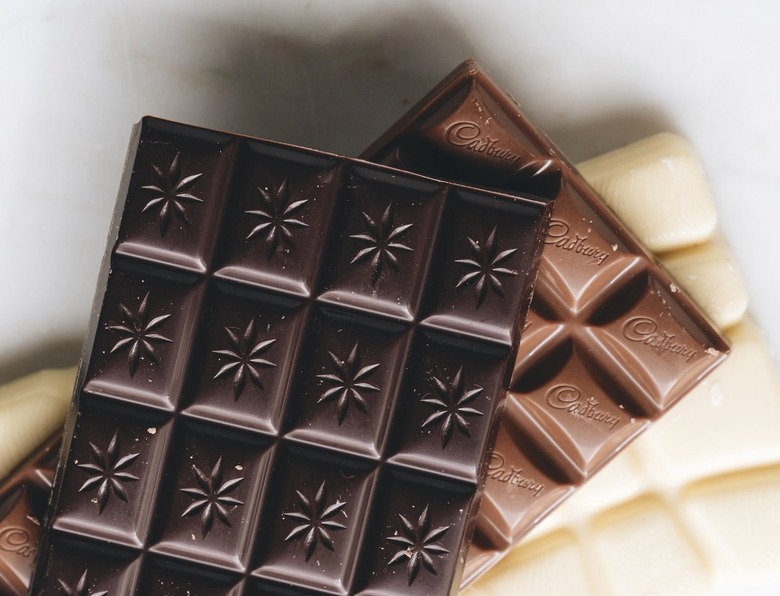You've Been Storing Your Chocolate All Wrong
When it comes to storing chocolate, we have questions because we've seen it stored everywhere you can imagine: in the refrigerator or freezer, on the countertop, and in a pantry or cupboard. But, how is chocolate actually supposed to be stored? We reached out to Isabel Maples, a nutritionist and registered dietitian with the Academy of Nutrition and Dietetics, for the expert answer.
"Chocolate is best stored in a cool (55 to 70 degrees Fahrenheit) pantry or cupboard," Maples explains. "Keep chocolate away from sunlight and humidity. It can absorb other flavors, so it's best stored in an airtight container." Based on its dairy and cocoa fat content, in the pantry, dark chocolate will last two years, milk chocolate will last at least a year, and white chocolate will only last for about four months.
However, there is one exception. If your pantry or cupboard conditions feature high humidity or a temperature above 70 degrees Fahrenheit, you'll want to put all your chocolate in the refrigerator or freezer (depending on how often you plan to use it). "It'll last three to six months in the fridge, but the freezer should be used if it needs to be stored longer than six months," Maples says, adding, "It should be in airtight container to avoid picking up the flavor of other foods."
When it comes to changing your chocolate's temperature and humidity conditions, you'll also want to be extra careful. Before placing it in the freezer, put your chocolate in the fridge for 24 hours to help it acclimate to the lower temperature. Reverse the process when removing it from the freezer and then allow the chocolate to sit at room temperature for at least 24 hours before unwrapping and using it.
If your chocolate is stored improperly, Maples says it can cause fat or sugar blooms (white spots on the chocolate's surface). "Sugar bloom is from being exposed to humidity. Here, the sugar crystalizes at the surface," says Maples. "Fat bloom is from a temperature change. The cocoa butter crystalizes at the surface, leaving the surface looking slick and melting to the touch." In both cases, the chocolate is safe to eat, but might not be as enjoyable.
Considering how much we love chocolate, there really is a lot we didn't know about how to store it.
